The trend has been to install smaller engines in place of larger engines – and to charge people more for what they’re not getting anymore.
It’s nice to see Mazda bucking that trend.
Last year, they brought out a new six cylinder engine – rather than a new turbocharged four cylinder engine. And they put it in a new crossover (the CX-90) that didn’t come with a luxury-badged crossover’s price.
Now comes some more – and with less.
Just not under the hood.
The CX-70 is a new six cylinder-powered crossover from Mazda that’s basically the same as the CX-90 Mazda brought out last year, but with two rather than three rows. It’s a way for those who don’t need the extra seats – but who’d still love to have that new six – to get what they want without getting what they don’t need.
Along with some more space.
Curiously, the two-row CX-70 costs more to start than the three-row CX-90: $40,445 for the Turbo Preferred trim (which comes with a 280 horsepower version of the new inline 3.0 liter inline six cylinder engine, paired up with a mild-hybrid system that cycles the engine off when the vehicle’s not moving, coasting or decelerating) vs. $37,845 for basically the same thing with one more row (and less cargo room).
A Turbo S – which stickers for $52,450 – gets a more powerful (320 horsepower) version of the same drivetrain.
Both versions of this medium-large crossover are also available with a plug-in hybrid drivetrain that replaces the otherwise standard 3.3 liter six with a 2.0 liter four paired up with an EV-like battery pack and electric motors (driving the rear wheels) that together produce 323 horsepower and 369 ft.-lbs. of torque. It can be driven about 26 miles on battery power alone – and you can charge up its battery without driving it. But unlike an EV, you can keep on driving for another couple hundred miles or so after you run out of charge – because there’s an engine there to keep you going.
This version of the CX-70 lists for $54,400 to start. A top-of-the-line CX-70 plug-in hybrid Premium Plus lists for $57,450.
All trims come standard with all-wheel-drive and an eight speed automatic transmission.
What’s New
The CX-70 is a new model that can also be thought of as a sub-model as it’s basically identical to the same-size CX-90 but without the latter’s third row.
What’s Good
Comes standard with a six.
Comes standard with phenomenal range (400-plus miles in city driving, 500-plus on the highway).
A luxury crossover in all but name. Or – rather – badge.
What’s Not So Good
Inline six comes standard with mild-hybrid system, which adds significantly to the cost.
More expensive than the same-thing CX-90 with the third row.
Plug-in hybrid’s towing capacity drops down to 3,500 lbs. (other CX-70s can tow as much as 5,000 lbs.)
In normal times – say four years ago – it would have been normal to find a six cylinder engine as standard equipment in a 5,000-plus pound crossover such as this. But – as you already know if you’ve been keeping up with events – six cylinder engines are disappearing from under the hoods of even 5,000-plus SUVs, such as the 2024 Toyota Land Cruiser (which comes standard with a four).
The reason why is straightforward enough.
It is harder to decrease the amount of gas an engine uses and decrease the amount of gas it produces without reducing the size of the engine. A smaller engine processes less gas (in and out) than a larger one and that is why smaller engines are taking the place of larger engines, which are getting harder to get past all of the regulations engines must be compliant with.
So it was a ballsy thing for Mazda to bring out a brand-new six cylinder engine last year and make it standard in the then-new CX-90.
The catch is that in order to “get away” with putting this new six under the hood, it was necessary to pair it with a mild hybrid system. You have probably heard a lot about that, too. These mid-hybrid system allow a six to fly under the radar – so to speak – by shutting it off as often as feasible. An engine that isn’t running isn’t burning. Or “emitting.”
And that’s how come you can get the CX-70 (and CX-90) with a standard six – which comes on when you need the power/performance of a six rather than a four.
The standard one makes 280 horsepower and 332 ft.-lbs. of torque; the optional version kicks that up to 340 horsepower and 369 ft.-lbs. of torque. And there is an upside to the mild-hybrid system that both of these engines are paired with.
Range.
The CX-70 with the 280 horsepower version of the six can go 444 miles in city driving – farther than many crossovers can go on the highway – and 518 miles on the highway. This is diesel-like range, without the cost of diesel fuel.
And without the wait of using electricity as a fuel.
The mild-hybrid system gets credit for this – by cycling the engine off whenever you don’t need it to be running (as when the vehicle isn’t moving, or is coasting/decelerating). But there is a cost for this. It is reflected in the MSRP, which would be lower if Mazda had been able to put just a six under the hood.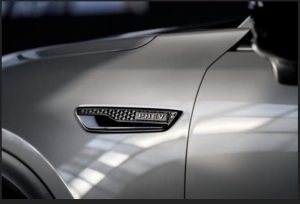
The plug-in hybrid – which is the third version – is what Mazda calls a Partial Hybrid Electric Vehicle (PHEV) and what that means is it can operate as an electric vehicle, just without the downsides of having to stop (and wait) all the time. The drivetrain consists of a 2.5 liter gas engine and a more powerful hybrid other side of the drivetrain that can move the vehicle at normal road speeds for about 26 miles. This reduces gas burning (and “emitting”) to zero for all of those miles, which helps Mazda sell more CX-70s (and CX-90s) with the six because of how it all averages out, in terms of gas mileage and gas-emitting “compliance.”
The plug-in hybrid iteration is also stronger than the 280 horsepower version of the six with the mild-hybrid assist and just as strong – in terms of torque output – as the 340 horsepower version of the six with the mild-hybrid-assist.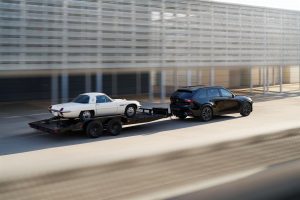
It produces 323 horsepower – and the same 369 ft.-lbs. of torque made by the 340 horsepower six with the mild-hybrid assist.
However, the plug-in hybrid version of the CX-70 is only rated to tow 3,500 lbs. All other versions – including those with the standard 280 hp version of the six with mild-hybrid assist – can tow up to 5,000 lbs.
But you have to step up to the Premium (and higher) trims to get that increased towing capacity.
The CX-70 may be only a Mazda – and so not a luxury-badged crossover – but it feels a lot like one. More finely, it feels like you got something in line with what you paid.
More than people who paid luxury-badged money.
For instance, the $59,500 it takes to get into an Audi Q7 – and for that sum all you get is a 2.0 liter four (and 261 hp). Sure, it’s a luxury-badged crossover. If that makes you feel better about it.
The Acura MDX still comes with a six. And a $50,900 base price. The Lexus RX – which used to come standard with a V6 – now comes standard with a turbo-hybrid four. And a base price of $48,600. For that you get a 2.4 liter four.
You get a lot more for the just-over-$40k Mazda is asking for the CX-70. Not just the size-appropriateness of the standard six cylinder engine, either. You get the intangibles – such as the sound and the feel of the power delivery that a bigger engine delivers.
And you get less – in terms of gears – and that’s a plus, too. The CX-70s eight speed automatic only has two overdrive gears rather than three and so it doesn’t have to shift around as much as nine and ten speed automatics. And it’s not a CVT automatic – even in the plug-in hybrid – so it actually does shift and that feels more like something than the anodyne, sensation-free feeling of a CVT pretending to shift as it varies through its ranges.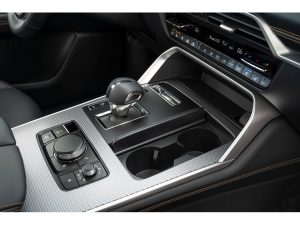
The CX-70 (and the CX-90) also have in common an attribute that is uncommon among crossovers, generally speaking: They both like to be driven. In italics to make a point about what just-sitting-there is – as opposed to what driving is.
If you’re someone who understands the difference between 2.0 liters of four and 3.3 liters you already know what a difference that is.
Mazda has done a fine job, too, of designing the hybrid side to be invisible to the driver. There’s no clunky stop-start cycling. You pretty much have to watch the tach to know when the engine’s off.
At The Curb
There are a few minor – and subtle – styling differences between the CX-70 and the CX-90, such as the CX-70’s blacked-out exterior trim accents and its slightly different lower front end. But the main difference is the absence of that third row – and the increase in space that takes its place.
Including under the floor – where the third row isn’t. Instead, there’s an additional storage area that’s also out of sight.
The CX-70 and the CX-90 both look pretty much the same – because they are pretty much the same. They are the same size and have the same shape – and the roster of standard and optional equipment is also pretty much the same.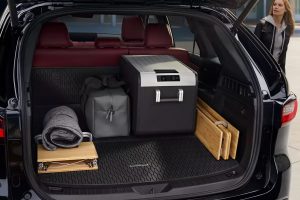
But they’e both very different – from other crossovers in the class. Some of those try to look like SUVs (e.g., the Kia Telluride) which is fine, if that’s the look you’re looking for. The rest look like the rest.
These two don’t.
Just look at them.
They each have a nice squat – i.e., a visually appealing stance created by a combination of width and (lower) height plus (longer) wheelbase. The effect is elegant, which is no mean feat for a crossover that is still what a crossover needs to be – that being practical. The latter being the main reason for the popularity of crossovers; more finely, the factor that has caused most people to abandon sedans – and their smaller trunks – for crossovers with their capacious cargo areas.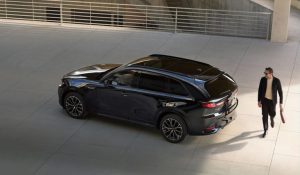
You get just that here: 18.5 cubic feet behind the second row and a total of 75.3 cubic feet available with the second row folded. That’s about 4-5 times the space for stuff you’d have in a sedan about the same size. As a point of comparison: The CX-70 is only a few inches longer than a mid-sized sedan like the 2025 Toyota Crown (the replacement for the Avalon) but the Crown’s trunk only holds 15.2 cubic feet of stuff.
Of course, other crossovers are just as practical; some a little more so. And they look it. In italics to make a point of mentioning what many people say about crossovers; which is that they all look alike.
And most do.
The Rest
One of the wonderful things about Mazdas – all of them – is that none of them come with automatic stop/start “technology.”
Another thing – about this Mazda – is that it doesn’t make you tap/swipe an LCD touchscreen to operate secondary functions. There’s a more tactile rotary dial/push it-to-engage-it interface that you can feel without having to look.
Al trims come standard with a 12 speaker Bose audio system and a 1,500 watt power point for accessories. Alexa voice-command is also standard.
The Bottom Line
It might not be a luxury-badged crossover, but unlike most of those, Mazda includes as standard features you don’t get standard in many of those.
Like a six cylinder engine – rather than an underpowered and size-inappropriate four.
. . .
If you like what you’ve found here please consider supporting EPautos.
We depend on you to keep the wheels turning!
Our donate button is here.
If you prefer not to use PayPal, our mailing address is:
EPautos
721 Hummingbird Lane SE
Copper Hill, VA 24079
PS: Get an EPautos magnet or sticker or coaster in return for a $20 or more one-time donation or a $10 or more monthly recurring donation. (Please be sure to tell us you want a magnet or sticker or coaster – and also, provide an address, so we know where to mail the thing!)
If you like items like the Baaaaaa! baseball cap pictured below, you can find that and more at the EPautos store!






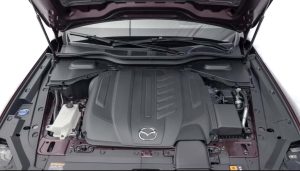
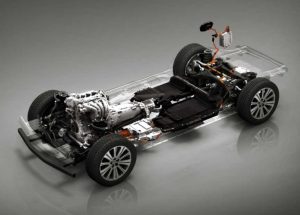
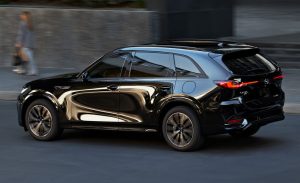


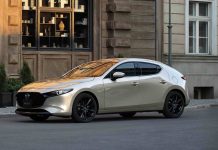





Eric, I was dismayed when I looked yesterday at the 2025 CX-5’s, the Awful Start Stop thing is back on them!!! Disgusting.
Hi Gary,
Thanks for the heads-up on this; I haven’t yet gotten my hands on a ’25. I will report when I do.
[…] marketed. Herewith that, taken from the press materials pertaining to the ’25 CX-70 I recently test drove, which you can read for yourself on Mazda’s media site: Unresponsive Driver Support “adds an […]
This car would have made our short list for our next buy, but NOT with the hybrid system.
Ditto, especially after watching the mechanic on YouTube go thru the nightmare of tear down /repair /reassemble if basic stuff goes south. Many things will require the front of the car coming off just to gain access.
I like Mazda and like that six cylinder engine and a real transmission- shame it can’t be a normal non turbo non hybrid car / SUV.
I wouldn’t mind the turbo, but the hybrid mess is a no-go for me.
It would probably never get used with how I use them.
If saving the world is so important, and your economic policy is to help out the poor and downtrodden, why not let this thing into the US?
Because a third-world product from a two-bit manufacturer would not be palatable in a first-world nation.
(This was meant to be a reply to ReadyKilowatt’s post below.)
Version 1.0 products are usually subpar. They get better over time.
Remember the Goldstar brand TVs and VCRs? They were 1/3 the cost of RCA or JVC and 1/4 the cost of a Sony. The VCRs were so cheap it wasn’t worth the effort to clean the tape path, just toss ’em and buy another. You had to make sure to point the remote directly at the TV because it wouldn’t pick up the button presses, even with fresh batteries. But they sold.
Eventually Goldstar got better. So much better that they felt they needed to rebrand… as LG, the first letters of their Korean name, Lucky Goldstar. Now they make an OLED panel that’s considered to be superior to everyone else by a wide margin. I’m reading this blog on an LG monitor that is commonly used by professional photographers because its wide color gamut and ability to be calibrated make it a reference design. LG phones are considered to be on par with Apple and Samsung, possibly superior.
And now you know why BYD won’t ever sell a car in the US.
RK: “LG phones are considered to be on par with
Apple and Samsung, possibly superior.”
Had two LG phones – both with major problems,
not made whole by LG. Samsungs going strong
after years. Have not seen any confirmation,
reviews, etc., extolling LG phones.
Other LG products I have, TV, washing machine,
monitors, – excellent.
Neat video on rotary (not a Wankle) engine:
https://youtu.be/UPFFXBAe5mc?feature=shared
It’s a good discussion of a rotary-vane engine from a theoretical and geometric point of view. But those sliding vanes exposed to combustion pressure and heat seem like a lubrication challenge to me. Surely there’s a better way. *reaches for pencil, ruler and protractor*
Repair complexity is scary. There’s YouTube info out there for the 90 version showing for many repairs the car gets disassembled. It’s off putting for DIY and expensive labor for a shop repair. That electric drive motor is buried behind the engine good luck if it goes south.
Also, as general competency declines just when we need it to improve good luck getting a “tech” to put it all back together perfectly. My Jeep got a warranty radiator replacement which required the front fascia, grill, AC discharge just to remove the radiator. They actually got it mechanically correct, but when I picked up the rig the sides of the bumper cover weren’t clipped into place. Took two seconds to gently press the molded clips into place. Almost like an F U for tasking them with a warranty fix.
These complex cars fine for a lease, but man I don’t know about buy and hold. That’s a lot of money for a car just to swap it out every 3 to 5 years.
Looks like the CX-70 and CX-90 are being made in Japan, like the excellent CX-5, so should be quality vehicles unlike the junk made in Mexico or the US. Sadly, they’re all loaded with crap nobody with common sense wants, like lane departure/lane keep, automatic brakes (those scare the crap out of me), radar cruise, etc. And are way too expensive.
When are automakers going to fight back against the EPA/NHTSA since Loper Bright?
When pigs fly I suppose. Hard to be optimistic nowadays.
Zoom Zoom.
Always have had a soft place in my heart for Mazda.
First car I learned to drive Mazda 808. Manual trans. Fun to drive.
Drove my 91’ Miata just shy of 200,000 miles before rust consumed it. The engine was still fine (15% leakdown) when it was sold for parts. That engine would run thousands of miles and the oil would still be a dark amber – not black like any other engine.
I thought about getting one of the new Mazda crossovers with a six-UNTIL I saw the price tags! As much as I would like to give the finger to Big Daddy Gov’t, I’m retired, so I have to be careful with my money.
Meanwhile, over in the third world…
https://cleantechnica.com/2024/05/28/byd-unveils-plug-in-hybrid-with-1305-miles-of-total-range/
“According to Autoblog, the latest versions of the BYD Qin L and Seal 06 sedans feature the Chinese automaker’s latest plug-in hybrid technology. With a fully charged battery and a full tank of gas, the technology can provide a driving range of 2,100 kilometers (1,305 miles), according to BYD chair Wang Chuanfu.”
The article goes on: “If you happen to live in China, the base price for the BYD Qin L and Seal 06 is 99,800 yuan ($13,775).”
If saving the world is so important, and your economic policy is to help out the poor and downtrodden, why not let this thing into the US? Even with the 100% tariff it’s still a bargain compared to every other hybrid on the market. Sure, it’s butt-ugly and you probably won’t survive a run-in with a semi truck, but maybe that will make you more alert to semis doing stupid things.
All good questions, RK!